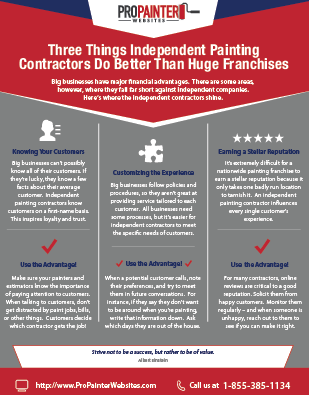Key Seasonal Considerations For Commercial Exterior Paint: What You Need To Be Informed Concerning
Key Seasonal Considerations For Commercial Exterior Paint: What You Need To Be Informed Concerning
Blog Article
informative post -Aguilar Skafte
When you're preparing an industrial outside paint task, seasonal factors can make or break your outcomes. You'll intend to think about exactly how temperature and moisture effect paint application and drying out times. Picking the ideal season can guarantee your paint sticks appropriately and lasts longer. However which local house painters are genuinely the best for this kind of work? Let's discover the key elements that can influence your job's success.
The Influence of Temperature on Paint Application
When you're planning a business exterior painting project, the temperature level can substantially influence exactly how well the paint adheres and dries.
Preferably, you want to repaint when temperatures vary between 50 ° F and 85 ° F. If it's as well cool, the paint might not treat effectively, resulting in problems like peeling off or breaking.
On the other side, if it's as well hot, the paint can dry also rapidly, stopping correct attachment and leading to an uneven coating.
You should additionally take into consideration the moment of day; morning or late afternoon provides cooler temperatures, which can be more beneficial.
Constantly check the supplier's recommendations for the details paint you're making use of, as they commonly offer support on the perfect temperature range for ideal outcomes.
Moisture and Its Result on Drying Times
Temperature isn't the only environmental factor that affects your business exterior painting job; humidity plays a considerable duty too. High humidity levels can slow down drying out times substantially, affecting the general top quality of your paint work.
When the air is saturated with wetness, the paint takes longer to heal, which can result in concerns like bad attachment and a higher risk of mildew growth. If you're painting on an especially damp day, be planned for extensive delay times between layers.
It's crucial to monitor neighborhood weather conditions and strategy appropriately. Preferably, go for moisture degrees between 40% and 70% for optimum drying.
Maintaining these factors in mind guarantees your job stays on track and delivers an enduring coating.
Best Seasons for Commercial Outside Painting Projects
What's the most effective season for your commercial outside paint jobs?
Spring and very early autumn are normally your best choices. Throughout these seasons, temperatures are light, and humidity degrees are frequently lower, developing excellent conditions for paint application and drying out.
Prevent summertime's intense heat, which can cause paint to completely dry as well rapidly, causing bad attachment and coating. Likewise, winter season's cool temperature levels can impede appropriate drying and healing, taking the chance of the durability of your paint task.
Aim for days with temperature levels in between 50 ° F and 85 ° F for optimum results. Keep in mind to check the local weather forecast for rainfall, as damp conditions can spoil your job.
Preparation around these elements ensures your painting job runs smoothly and lasts much longer.
Final thought
Finally, preparing your business outside painting projects around seasonal factors to consider can make a considerable distinction in the result. By organizing work throughout the optimal temperatures and humidity levels, you'll guarantee better bond and drying times. Keep in mind to keep an eye on local weather forecasts and choose the right time of year-- springtime and very early fall are your best choices. Taking these actions will certainly help you achieve a resilient and specialist finish that lasts.
